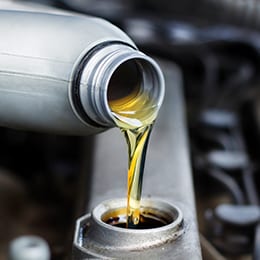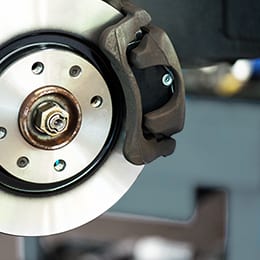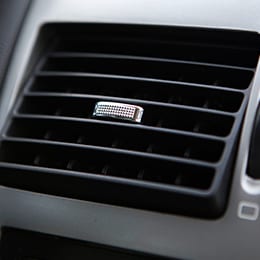AUTO AC REPAIR & RECHARGE NEAR ME
Sun Auto Service is the expert when it comes to auto air conditioning repair in the Austin, Texas and Las Vegas, Nevada areas. Whether your car’s AC is blowing warm air, isn’t blowing at all, or has intermittent cooling issues, visit Sun Auto Service for your FREE Air Conditioning Inspection.
Repairs as well as evacuation and recharges require skilled, knowledgeable technicians with state-of-the-art equipment to perform modern vehicle air conditioning troubles. Sun Auto Service Technicians possess the knowledge, certifications, and the most sophisticated equipment to repair your vehicle properly.
See our Online Coupons for great prices on Air Conditioning Service.
Auto AC Repair in Texas
We have multiple Sun Auto Service locations in Texas to serve you, including locations in Austin, Houston, San Antonio, Katy, League City, and Lakeway. Visit a Sun Auto Service today for help with your car’s air conditioning from an ASE-Certified Technician.
Auto AC Repair in Nevada
In Nevada we have locations throughout Las Vegas, North Las Vegas, and Henderson. With so many service centers, you’re sure to find a Sun Auto Service in your neighborhood to get your air conditioning back in order by an ASE-Certified Technician.
SERVICE INCLUDES:
- Basic inspection
- Adjust belts and tighten hose connections where necessary
- Test for leaks electronically
- Add Freon*
- Basic A/C service includes service for 134A refrigerant system
*In order to fully charge the system, certain vehicles might require an evacuation and recharge of the entire system – at an additional cost. Parts extra.
Save on your repair! SEE ALL OUR OFFERS >
POPULAR REPAIR & MAINTENANCE SERVICES
How A Car AC System Works
A car’s air conditioner basically transforms warm air by removing any heat and moisture and turning it into cooler air. The air conditioning’s compressor controls the high pressure side of the air conditioning system by constricting refrigerant and forcing it into a high pressure condition, making it liquefy.
From there, the refrigerant travels through high pressure lines to the condenser where it introduces the refrigerant to fresh air from outside the vehicle so that it absorbs heat from the liquid.
Next, the liquid flows into the orifice tube/expansion valve where it is transformed into a gas and introduced to the low-pressure side of the A/C system where it then flows into the accumulator or receiver dryer to remove or collect any moisture and contaminants.
The clean refrigerant gas then travels through the tubing into the evaporate where it absorbs heat from the air passing through the evaporator’s fins to produce cool air. The cooler air reaches the cabin by the use of fans through the vehicle’s vents. Refrigerant then journeys back to compressor where it returns to a gaseous state to repeat the process, over and over again.
Auto A/C Recharge Service
After a visual inspection and a check of refrigerant levels to ensure no major malfunctions are present, a technician will perform an evacuation and recharge to identify any major leaks within the system. Once the system has been vacuumed and all refrigerant has been removed and no leaks are identified, the recharging process begins. Recharging is the process that places refrigerant back into the air conditioning system along with a leak tracer dye for identifying leaks in the future.
Reasons Why Your AC is Blowing Warm Air
- Low refrigerant
- Faulty Condenser
- Failed Compressor
- Damaged cooling fans
- Electrical problems
What Goes Into a Car Air Conditioning Service
Modern vehicles with air conditioning troubles are often due to either operational or air flow issues. Determining which function is at fault is the first step. The evaluation of the air conditioning service includes:
- Complete visual inspection of all visible A/C components including belts and hoses
- Test pressures
- Measure refrigerant levels
Most often, air conditioning troubles are the result of lack of or shortage of refrigerant. The air conditioning system is meant to be completely sealed and though it will naturally lose .5 ounces per year, any amount higher than that is considered a leak and its cause must be determined.
Frequently Asked Questions About Auto A/C Repair Service
Q: How to Make Car AC Colder?
A: How to make the air conditioning in your car blow colder depends on the kind of problem your air conditioner is experiencing. A technician will need to check whether it’s due to a shortage of refrigerant or whether there is a blockage somewhere in the system. Most often, low refrigerant levels are caused by reduced temperature production. Here are some signs of when to recharge your car’s AC.
Q: Does Car AC Waste Gas?
A: The vehicle’s air conditioning system does not demand fuel for operation; however, fuel is used to create the energy needed for the air conditioning to function. The air conditioner receives energy from the alternator that is powered by the engine and fuel is needed to power the engine. The more energy the engine demands, the more fuel is needed.
Q: How Much Does Car A/C Repair Cost?
A: Air conditioning repairs can vary greatly based on the problems your air conditioner is experiencing. Parts and labor charges differ based on the determination of a control, refrigerant, or airflow issue. Sun Auto Service will perform a no-charge Air Conditioning Inspection to help establish the source of your vehicle’s air conditioning issue.
Q: Why Does My Car AC Smell?
A: Air conditioning systems with foul odors are often due to a clogged cabin air filter or the growth of mildew or mold that has built up in the evaporator core located just behind the dashboard. Sun Auto Service offers a special service to help eradicate such odors.
Q: How to Check the AC Pressure In a Car?
A: Most car air conditioning systems use a refrigerant that is a gas. In cars produced after 1993, the standard systems include R134A and 1234YF. In order to check the pressure in your vehicle, a special machine, based on your vehicle’s system, will be connected to your vehicle and the pressures will be measured. The Technician will compare your vehicle’s reading to the manufacturer’s specifications to determine how much refrigerant is needed to restore the system to normal conditions.




